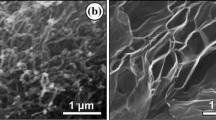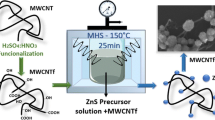Abstract
Carbon nanotubes (CNT) possess excellent intrinsic characteristics such as exceptionally high mechanical and conductive properties which make them the prime candidate to reinforce high-performance composite structures. However, location and dispersion state of the CNTs are of particular importance to achieve the mechanical and electrical enhancement of carbon-reinforced composites. In the frame of European Project SARISTU, different approaches were investigated by the different partners (e.g., veils, powdered doped prepreg, and doped adhesives). Each approaches required specific dispersion solution. Along its existence, Nanocyl has developed a large experience in incorporation of CNTs in different resins (thermoplastics, thermosets, etc.) using improved innovative mixing process, CNT surface modification (functionalization) or by adding some dispersing agents or compatibilizers. Applying this expertise to SARISTU context, the requested products were delivered in the suitable form for each scenario. As an example, ground CNT/thermoplastics compounds were produced for powdered doped prepreg and different grades of doped thermoplastics for veils production.
Access provided by Autonomous University of Puebla. Download conference paper PDF
Similar content being viewed by others
Keywords
These keywords were added by machine and not by the authors. This process is experimental and the keywords may be updated as the learning algorithm improves.
1 Introduction
Since the first observation of CNTs in the early 1990s [1], huge progresses have been made in the understanding of this cutting-edge material. For a long time, carbon nanotubes were only categorized and used as “highly conductive fillers,” but nowadays this nanotechnology is starting to exhibit its true potential and proves that it can improve or even impart new properties to polymers (mechanical, chemical, or thermal properties). At the end, the composite will not only offer electrical conductivity but will also present better mechanical or chemical or heat resistance under operation, which will allow researchers and engineers to develop, create, and design breakthrough materials and unprecedented technologies.
Nanocyl is one of the first companies to be established in Europe for the commercial supply of this family of novel material. From 2002, Nanocyl has built up its worldwide recognition by providing high-quality products adapted to the customer’s needs. Its expertise in tuning the carbon nanotubes properties and morphologies to obtain the best out of their intrinsic potential has made Nanocyl one of the most recognized producers of specialty carbon nanotubes and of materials and technologies using carbon nanotubes. Moreover, this knowledge and expertise has led Nanocyl to exploit further the CNT advantages by preparing concentrates, dispersions, and semi-formulated products out of various material families (thermoplastics, thermosets, elastomers, silicones, liquids, etc.).
2 Carbon Nanotubes
Numerous different carbon nanotubes can be produced by playing with carbon sources, catalyst, process, and temperature. At Nanocyl, large volumes of thin MWCNT (NC 7000) are produced by catalytic chemical vapor decomposition. A primary interest of NC 7000 is low percolation threshold for electrical conductivity toward other conventional carbon-based fillers. In Fig. 1, a micrograph of NC 7000 is shown and their intrinsic characteristics are given in Table 1.
Nanocyl is also leading pro-actively health, safety, and environment matter all long the life cycle of product containing MWCNT NC 7000. Interaction with several key players and participation to different European projects has led to numerous data collection and positioning [2] on hazard [3, 4], exposure, use phase [5, 6], and end of life. As a consequence, registration dossiers under REACH have been filed and provide information on the safe uses of MWCNT.
Further, NC 7000 functionalized with amino groups (NH2-NC 7000) was produced by a patented plasma process. The amino groups should improve the dispersion of the CNTs into the matrix leading to an increase of mechanical performances and a lower percolation threshold for electrical conductivity.
3 Carbon Nanotube-Doped Epoxy Concentrates
In order to enhance and achieve good performances, dispersion of CNTs in the matrix is from prime importance. Over years, Nanocyl developed knowledge on incorporation processes and good dispersion of CNTs. Based on this expertise, several grades of CNTs epoxy concentrates were developed (EpocylTM). Two of them are dedicated to mechanical reinforcement (grade name: Epocyl 128-02 and Epocyl 128-06) and one for electrical conductivity application (grade name Epocyl 128-05).
SARISTU project was targeting notably the electrical conductivity, and Epocyl 128-05 was therefore chosen. Dilution factor has to be calculated accordingly to the desired level of conductivity (see Fig. 2).
In order to enhance the mechanical performance, a modified grade of Epocyl 128-05 was also produced with amino groups functionalized CNTs. Studies undertaken by Fraunhofer and EADS with those two products show no significate effect on mechanical and electrical properties of amino groups functionalized CNTs in comparison with unfunctionalized.
4 Carbon Nanotube-Doped Thermoplastics
Nanocyl’s expertise for the dispersion of CNTs in thermoplastics is used to produce high value masterbatches or compounds (PLASTICYL™ grades).
Plasticyl products provide easy to use masterbatches containing CNT already pre-dispersed. In some cases, for equal surface resistivity, a reduction up to 25 % of CNTs loading could be achieved by using Plasticyl masterbatch (see Fig. 3, surface resistivity threshold: 106 Ω–2).
PLASTICYL™ is available in a wide range of thermoplastic resins, including PC, PP, PA, PET, HDPE, POM, and others. The knowledge for the production of PLASTICYL™ was used for the production of compounds and concentrates for veils and powdering applications.
4.1 Veils Application
Thermoplastics with suitable compatibility regarding CFRC were selected. This selection was mainly based on the chemical nature of the thermoplastics.
A second selection was based on the physical properties of the thermoplastics. In order to melt during the curing cycle and migrate in CFRC, melt temperature of thermoplastic should be between 110 and 135 °C. Also, the melt viscosity and MVR should be adapted to industrial veils process. Table 2 shows the properties of the thermoplastics retained for the production of veils.
A first set of trials based on thermoplastic 1 was performed to identify the request loading of CNTs to reach the targeted electrical conductivity of 10–20 S.m.
A second set of trials has been performed on thermoplastic 1 with CNTs functionalized with amino groups. No significate effect of amino group functionalization was observed on electrical conductivity behavior [7].
Batches of both compounds were produced using industrial twin-screw extruder and suitable information was collected to conduct the cost/risk/benefit analysis in WP 132.
Lab scale veils were then produced by TECPAR and integrated in CRFC by TECNALIA. Evaluation of those CRFC doped with CNTs veils shows an increase of Kz electrical conductivity up to 18 S.m (baseline at 4 S.m). In terms of damage tolerance, about 30 % of compression after impact and 100 % increase of G1C are observed [7].
Due to high viscosity of CNT-doped thermoplastic 1, industrial production of veils was not possible yet. Therefore, other thermoplastics (thermoplastics 2–5 in Table 2) were doped with CNTs. Those materials are under veils production evaluation by TECPAR [8].
4.2 Powdering Application
For this application, thermoplastics with suitable compatibility regarding CFRC were selected. This selection was mainly based on the chemical nature of the thermoplastics. Thermoplastic 1 (properties are given in Table 2) was chosen for this purpose. As no specific limitations were observed for the powdering application, thermoplastic 1 was doped with a maximum loading of CNTs. The CNT-doped thermoplastic 1 was produced on a twin-screw extruder in pellet form.
The CNT-doped thermoplastic granules were ground with a lab scale grinder at University of Patras (UoP). The obtained powder was deposited on top of the prepreg. Those were then evaluated in CFRC by University of Patras and Tecnalia and showed significant increase in damage tolerance. Compression after impact was increased by 50 % [7, 9].
Unfortunately, the grinding equipment used by University of Patras showed limitation in terms of throughput and particles distribution. Indeed, productivity was very low (few grams per day) and particle size quite high (mean around 250 µm). In order to find alternatives, Nanocyl tested a selected industrial grinder. This industrial grinder showed a throughput one thousand times higher than the equipment used by UoP as shown in Fig. 4, a reduction of mean particles size from 100–250 µm (UoP) to 45–100 µm (NCYL 1 run). By regrinding the obtained CNT-doped thermoplastic powder, a significant increase of particles below 100 µm is observed. Figure 5 shows an increase of 25 % for twofold ground CNT-doped thermoplastic (NCYL 2 runs) toward one time ground CNT-doped thermoplastic (NCYL 1 run). Additionally, during grinding trials, suitable information was collected to conduct the cost/risk/benefit analysis in WP 132.
5 Conclusion
In the frame of SARISTU, Nanocyl has explored several approaches to increase the performances of carbon-reinforced composites. Therefore, based on Nanocyl knowledge, commercial multiwalled carbon nanotubes (NC 7000) were incorporated in different media (thermoplastics, epoxy resins) allowing some significant increase in damaged tolerance and electrical conductivity (Kz).
Furthermore, in order to increase CNT-doped thermoplastic grinding capacity, industrial grinder was positively evaluated.
Abbreviations
- BET:
-
Brunauer, Emmet, and Teller theory to determine specific surface area
- CNTs:
-
Carbon nanotubes
- CFRC:
-
Carbon fiber-reinforced composite
- MVR:
-
Melt volume flow rate
- MWCNTs:
-
Multiwalled carbon nanotubes
- TEM:
-
Transmission electron microscopy
- TGA:
-
Thermal gravimetric analysis
References
Iijima S (1991) Helical microtubules of graphitic carbon. Nature 354:56–58
Ma-Hock L, Treumann S, Strauss V, Brill S, Luizi F, Mertler M, Wiench K, Gamer AO, van Ravenzwaay B, Landsiedel R (2009) Inhalation toxicity of multiwall carbon nanotubes in rats exposed for 3 months. Toxicol Sci 112(2):468–481
Treumann S, Ma-Hock L, Gröters S, Landsiedel R, van Ravenzwaay B (2013) Additional histopathologic examination of the lungs from a 3-month inhalation toxicity study with multiwall carbon nanotubes in rats. Toxicol Sci 134(1):103–110
Wohlleben W, Brill S, Meier MW, Mertler M, Cox G, Hirth S, von Vacano B, Strauss V, Treumann S, Wiench K, Ma-Hock L, Landsiedel R (2011) On the lifecycle of nanocomposites: comparing released fragments and their in-vivo hazards from three release mechanisms and four nanocomposites. Small 7(16):2384–2395 (Aug 22)
Hirth S, Cena L, Cox G, Tomovic Z, Peters T, Wohlleben W (2013) Scenarios and methods that induce protruding or released CNTs after degradation of nanocomposite materials. J Nanopart Res 15:1504
Flórez S, Gayoso J. Enhancement of primary structure robustness by improved damage tolerance, Saristu final meeting
Latko P, Boczkowska A. Fabrication of carbon nanotube doped veils, Saristu final meeting
Vavouliotis A, Sotiriades G, Kostopoulos V. Multi-scale reinforced pre-pregs for the improvement of damage tolerance and electrical properties of aeronautical structures, Saristu final meeting
Acknowledgments
Nanocyl thanks AS 09 and 10 partners for their fruitful collaboration.
The research leading to these results has received funding from the European Union’s Seventh Framework Programme for research, technological development and demonstration under Grant Agreement No. 284562.
Author information
Authors and Affiliations
Corresponding author
Editor information
Editors and Affiliations
Rights and permissions
Copyright information
© 2016 Springer International Publishing Switzerland
About this paper
Cite this paper
Bonduel, D., Kchit, N., Claes, M. (2016). Use of Carbon Nanotubes in Structural Composites. In: Wölcken, P., Papadopoulos, M. (eds) Smart Intelligent Aircraft Structures (SARISTU). Springer, Cham. https://doi.org/10.1007/978-3-319-22413-8_38
Download citation
DOI: https://doi.org/10.1007/978-3-319-22413-8_38
Published:
Publisher Name: Springer, Cham
Print ISBN: 978-3-319-22412-1
Online ISBN: 978-3-319-22413-8
eBook Packages: EngineeringEngineering (R0)









